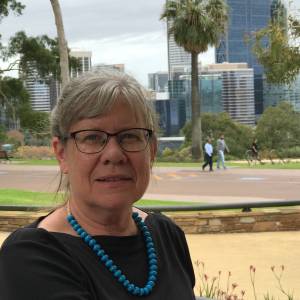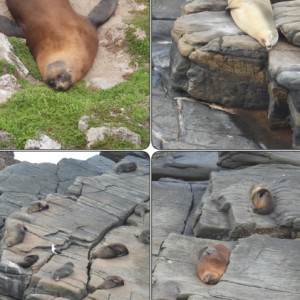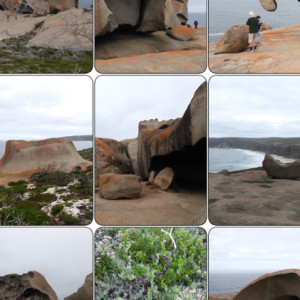Kangaroo Island
day 2 of our trip to Kangaroo Island. We drove across the island to the south west through pastoral lands, timber plantations and National Parks.
The island is 150km long and half was burnt in terrible fires in 2019-2020. First stop was to see some amazing rock formations (basalt). These are called the Remarkable Rocks which I have featured in my main blip. I have tagged it as abstract even though it doesn’t fit the theme. We viewed some fur seals here from the top of the cliffs, these are a few survivors from the fur traders in the 1800s. They are now protected and slowly building up numbers.
A big drive back east to Vivonne Bay Lodge for lunch ( all but one building was burnt here) and then onto the sea lions. These are a bit similar to the fur seals ( and walrus) but have different size and characteristics. We had a guided tour down to the beach amongst them, wow that was great (but smelly). They a solitary in nature but live in a group. By that I mean they do their own thing and don’t have family bonds. They swim way out to sea to the continental shelf and dive down huge depths 800m to fill up before returning to land ( 3 day turn around). Then they sleep for three days before heading out again. Their only predator is the great white shark or occasional orca.
The island has little rainfall so the trees are short and bent, not good for felling for timber. They planted many forests of Tasmanian Blue Gums which have been burnt in the fires. Prior to this the 20 introduced koalas (in 1919) had grown to 7000 in the 1980s. The koalas rapidly increased in population to 50-60,000 before the fires. That was unsustainable. Most of these were killed in the fires which was extremely distressing to hear but they are now back to about 8000 which is a good balance. We saw lots yesterday and one in a tree at our lunch spot.
KI is much flatter than I expected, low rolling hills and 500km coastline. The population is 4700 and they get their power from the mainland (didn’t come until 1970s). The water is from rainwater and a desalination plant. Most roads are unsealed, the sealed ones were damaged in the fires. There are 2 sets of traffic lights ( for roadworks). There are a couple of schools up to year 10. There is a small hospital but no doctor there. I guess there is a GP and a paramedic.
Industries include; sheep, cattle, grain, tourism, fishing, wineries, eucalyptus oil, olives, honey and timber. On the first day I only saw 3 other cars ( I was at the back of the bus so may have missed some but it was very quiet).
We are now back in Adelaide and have come in from dinner for my birthday. I’m still 59 though, my name proves it. I had lots of messages from the family and was surprised the reception on the island was pretty good.
I forgot to mention the island was named Kangaroo Island for obvious reasons. The early seafarers were easily able to hunt them for meat as there had been no human occupation for 6000 years and they were unafraid of people. They have adapted to the colder climate by growing a thicker fur and their colouring is darker like chocolate with black tails, legs and snout. They are called Kangaroo Island kangaroos ( logical). We didn’t see many but there were thousands of grey kangaroos on the mainland on the drive back to Adelaide.




Comments
Sign in or get an account to comment.


